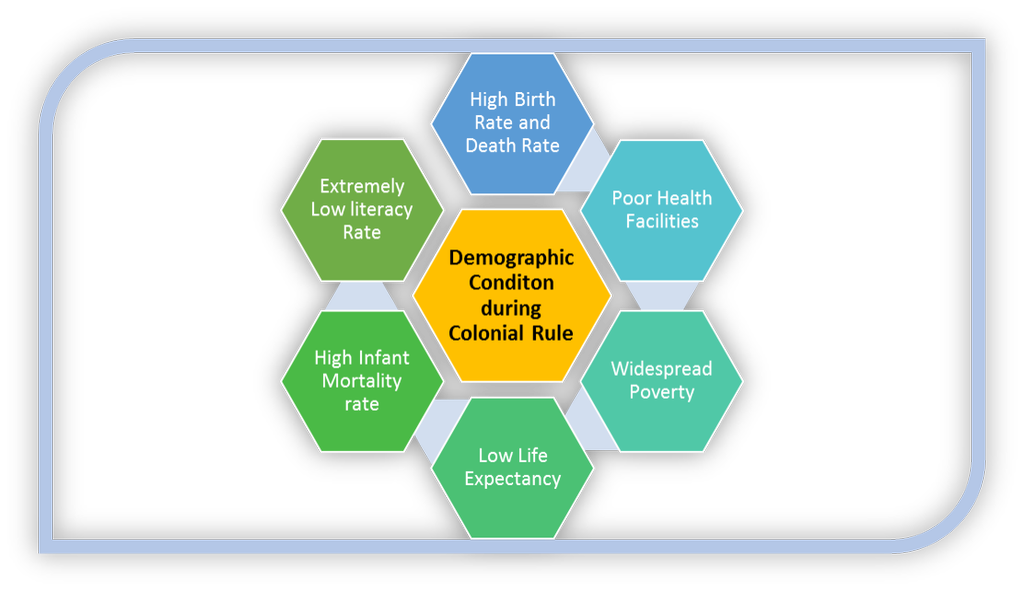DEMOGRAPHIC PROFILE DURING BRITISH RULE
Demographic condition during the British rule exhibited all features of a stagnant and backward Indian economy.
- First official census: The first official census was conducted in the year 1881. Though suffering from certain limitations, the census revealed unevenness in India’s population growth. From 1881 onwards, census operations were carried out after every 10 years.
- 1921: Year of the great divide: Before 1921, India was in the first stage of demographic transition. The second stage of transition began after 1921. So, the year 1921 is described as the ‘Year of the Great Divide’.

1. Birth Rate and Death Rate- Birth rate refers to number of children born per thousand in a year. Death rate refers to number of people dying per thousand persons in a year. Both were very high, at nearly 48 & 40 per thousand and this suggested a state of massive poverty in the country.
2. Infant Mortality Rate- Infant mortality rate refers to number of infants dying before reaching one year of age per 1000 live birth in a year. The infant mortality rate was about 218 per thousand, in contrast to the infant mortality rate of 44 per thousand in 2011.
3. Life Expectancy- Life expectancy refers to the average number of years for which people are expected to live. The average life of a person living in India at that time was just 32 years, which meant that there were poor medical facilities, and a lack of awareness and means to avail themselves.
4. Literacy Rate- It was as slow as 16% and the female illiteracy rate was even worse reflecting social and economic backwardness along with gender bias. It means the structure of the working population across all three sectors of an economy I.e. primary, secondary and tertiary.
5. Widespread Poverty- Extensive poverty prevailed in India during the colonial period. The overall standard of living of common people in India was very low and there was widespread poverty in the country.
6. Poor Health Facilities: Public health facilities were either unavailable to large mass of population or, when available, were highly inadequate. As a result, water and air-borne diseases were widespread and took a huge toll on life.

 PathSet Publications
PathSet Publications
